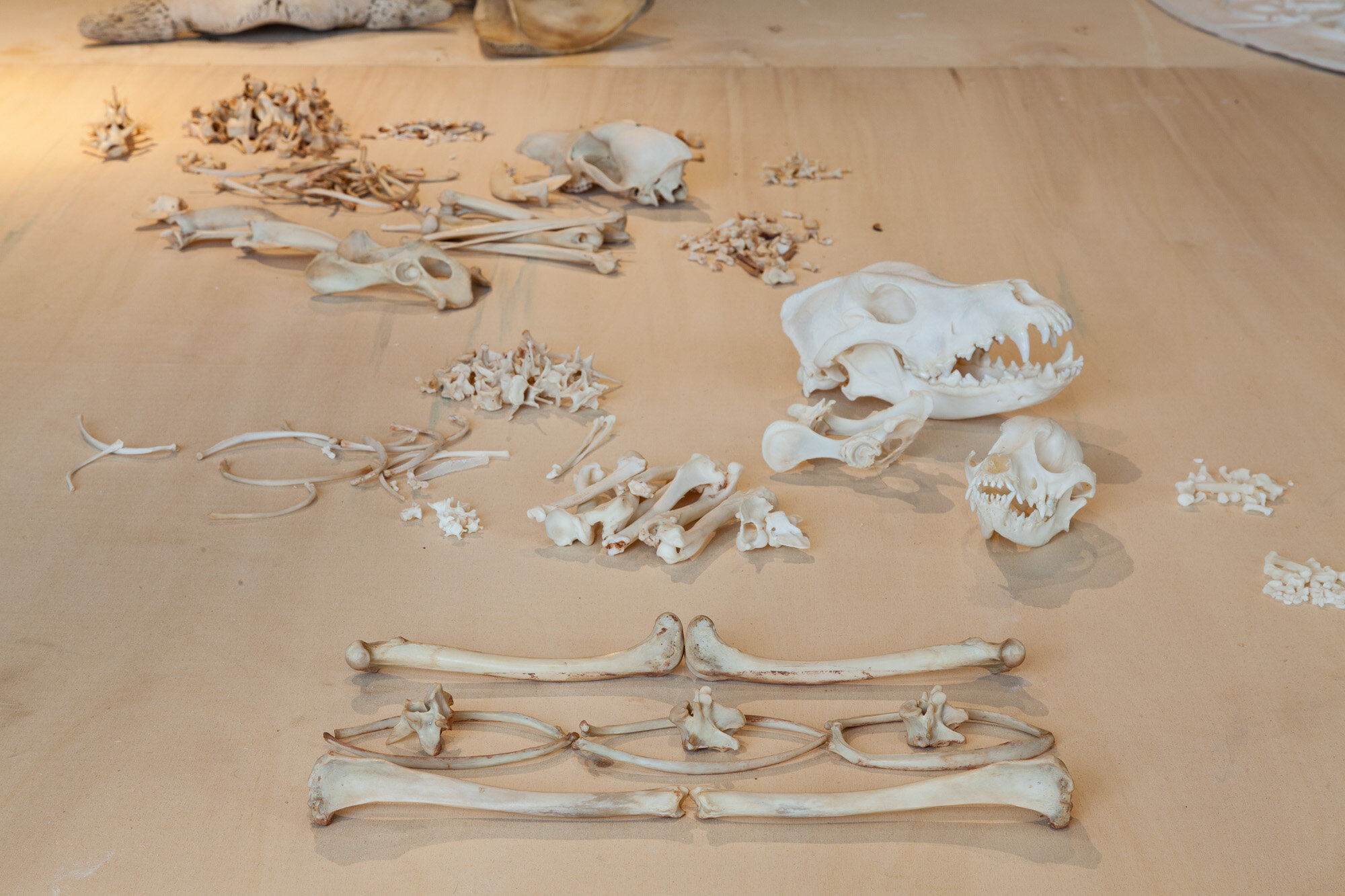The flesh is yours, the bones are ours
2015
Plaster casts, rubbings, vitrines, bones, writing, ephemera; dimensions variable
Commissioned by the 14th Istanbul Biennial, SALTWATER: A Theory of Thought Forms, curated by Carolyn Christov-Bakargiev, funded in part by the Graham Foundation
In the 1870s, fires throughout Istanbul destroyed many of the traditional wooden houses, inaugurating a new era of stone structures. Raimondo D’Aronco, one of the architects who built them, was largely responsible for introducing Art Nouveau to the city in the early 20 the century. The buildings he designed mixed this novel Western aesthetic with the characteristics of Turkish Ottoman architecture.
Istanbul’s art nouveau buildings rose at a time when its Armenian population was about to fall as a result of the Armenian Genocide. A member of this community, the artisan Garabet Cezayirliyan, was responsible for crafting the moldings and friezes installed on the facades of these edifices, many of which remain visible today. I collaborated Kemal Cimbiz, who owns and operates the atelier that continues to produce these decorative architectural elements.
When giving Cimbiz over as an apprentice to his master, his parents told Cezayirliyan, “The flesh is yours, the bones are ours.” A customary Turkish saying, the phrase is meant to convey that the teacher is granted influence over the learner. The expression cuts deeper in this project, however, as the many architectural flourishes found on the “skin” of Istanbul’s buildings were created by Armenian craftsmen like Cezayirliyan and their ateliers. These plaster decorations, the traces of Armenian fingers and hands, have borne silent witness to the traumatic histories of the city’s Armenian Population.
The flesh is yours, the bones are ours engages with this craft as an opening to larger questions about the transmission of knowledge and skillsets, and the maintenance of tradition as a resistance against cultural erasure. New designs representing repressed histories or unwanted memories developed through workshops with Cimbiz and a group of students from the remaining Armenian community in Istanbul. Together, we constructed molds from these designs. The original molds have survived largely due to a construction method employing a plaster aggregate of ground-up animal bone. The new molds were made in the same way, but using the bones of livestock descended from farms in Anatolya that were owned by Armenians who perished in the genocide beginning in 1915.
Another component of the project is the dispersal and installation of these architectural motifs from the facades—the skins—of selected buildings throughout the city, creating a kind of architectural séance, conjuring the ghosts of citizens forcibly forgotten.









